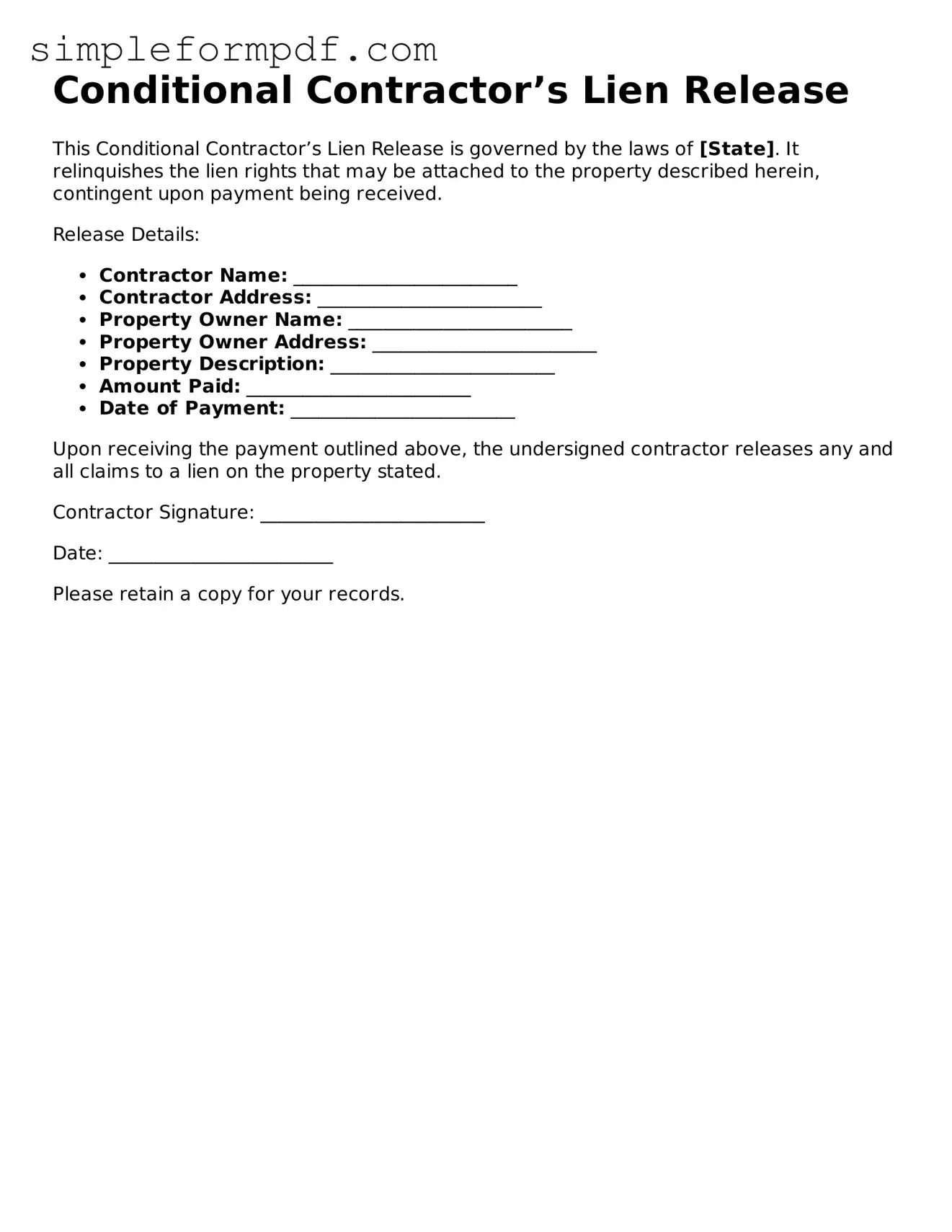Fillable Conditional Contractor’s Lien Release Template
The Conditional Contractor’s Lien Release form is a legal document used by contractors to relinquish their lien rights conditionally, ensuring that they will receive payment for their services. This form is crucial in protecting both contractors and property owners during construction projects. To streamline your process and secure your interests, consider filling out the form by clicking the button below.
Launch Editor
